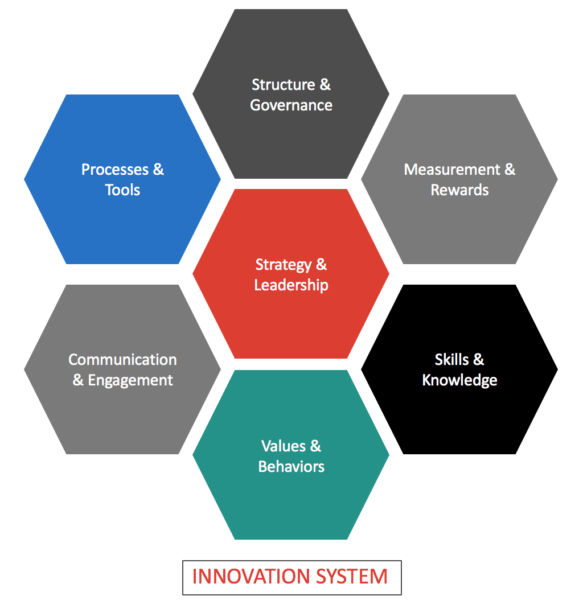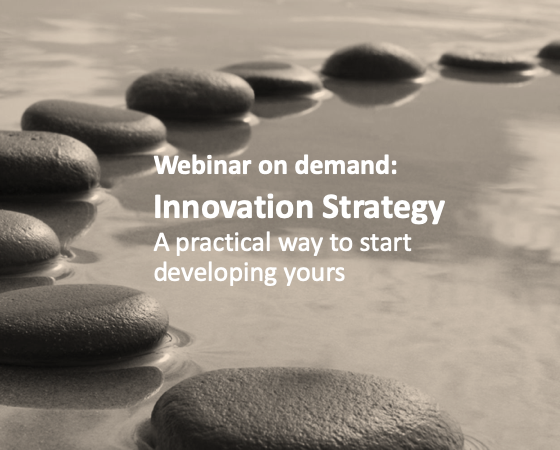— June 24, 2019
What is Innovation Management? Innovation Management involves all activities that provide the right conditions for innovation to repeatedly deliver value for customers, competitive advantage and growth for the business as well as benefits for employees and all other stakeholders.
Innovation management needs to become a professional discipline
Managing innovation is a relatively young discipline considering that many of our management practices have been developed almost a hundred years ago. Practices such as project management and total quality were introduced decades ago and have matured over time. Innovation needs to be on that same trajectory to provide significant value for a business.
Innovation is associated with creativity, fun, change and excitement and many people speak of the need for an “Innovation Culture”. There are good examples of organizations who approach innovation strategically and systemically such as Shell and DSM but many more still view innovation as a project and as a result, it falls in the nice to have category.
To advance innovation and deliver the results that people expect, we need to focus on professionalizing innovation management just like any other business discipline without losing the creative and entrepreneurial traits that are crucial to delivering value for customers in new and different ways.
You’re never starting from a greenfield situation
If you are in an organization and you’ve just been given the responsibility for innovation management, you quickly realize that you are not starting from a green field situation. Every organization innovates and in pockets around the organisation, there’s a lot of enthusiasm for it. There will be individuals who believe that innovation is important. They have started well-intended innovation initiatives but mostly these are ad hoc and rarely connected to the overall business strategy.
Of the larger organisations, 75% do not have a well-structured innovation process. The challenge is how to start innovation management without losing that existing enthusiasm. How will you leverage what is already there but at the same time make difficult and necessary choices to cut certain initiatives that do not deliver results?
We’re offering a pragmatic and systematic approach to get you started and underway.
Approach Innovation Systemically
Before we start with practicing innovation management we need to answer a few critical questions that prevent taking action without direction. To do this we have developed a framework that approaches innovation management systemically. It provides a coherent view of the system design, linkages between different elements, the current and future state.
Innovation Management includes two major streams of activities:
- Implementation, monitoring and improvement of the innovation system
- Guiding and supporting the actual innovation work that teams are involved in

Five steps to getting started with Innovation Management
Step 1: Focus on the bigger picture
The starting point is to have a sense of direction and purpose for innovation. Many business leaders are actually disappointed in the results that innovation delivers and we know this is largely because there was a mismatch between expectations, scope and investment.
We know that top performing companies approach innovation strategically. You need to have a strategy to make choices about what is right for your company, where you believe you need to focus your investments to achieve your growth ambitions and how you expect innovation to contribute to the company’s goals.
This is both a top down and bottom up exercise with involvement from senior leaders and key staff across the company. In parallel, we map the current state of innovation (diagnostics) while the focus for senior management is to align on the future state of innovation (vision of success), i.e. the scope and organizational requirements for innovation to deliver against the growth goals of the company.

Quick fixes are meant to address the most critical barriers that will immediately get in the way. When we start any innovation initiative we want to make sure that good ideas get funded and progressed to commercialization.
These barriers (and enablers) are identified when we assess the current state of innovation in step 1. Contrary to what you might think the most difficult barriers to overcome are not tangible processes or resource constraints, but embedded beliefs about how the business should operate. What we believe leads to success drives how the organization is structured, it’s processes, policies and behaviors and this can prevent people from being effective in doing their work.
Step 3: Start innovation immediately
Start with Innovation projects immediately and don’t wait for the Innovation System to be completely implemented. The business is expecting results and the advantage of starting early is that you will leverage the existing enthusiasm and momentum in the business for innovation. Working on real innovation will also help you to develop the necessary skills while you deliver those results. It will help you to learn what works and what doesn’t and use these insights to finetune your innovation system.
The business strategy should provide guidance where we play and how we win and drive our innovation efforts. A portfolio for Core vs Adjacent vs Future Growth areas specifies where we need to look for ideas and focus our first innovation projects.
At this stage, you won’t have a fully developed innovation process yet but the following three stages describe innovation at a high level and can be used to guide your projects:
- Discovery – learning, developing new perspectives and key insights that lead to ideas
- Opportunity – turning insights into ideas and new growth platforms
- Realization – taking specific ideas to action and commercialization

Start innovation projects in waves. The first wave could include a project to identify new growth areas (front end of innovation) and one that takes an existing idea to market using business model innovation and rapid experimentation techniques (backend of innovation). In a subsequent wave, you could opt to engage employees in an online innovation challenge, soliciting ideas for a particular problem you want to solve or organize a hackathon with open participation from outside the company. Your choices will depend on the strategy and goals set in step 1, Focus on the bigger picture.
Step 4: Design all the system elements
Strategy & Leadership
We covered innovation strategy in step 1. We must prepare leaders for the differences in managing innovation compared to other business disciplines. Leading innovation requires executives to adopt many different behaviors. Absolute control is less effective with innovation than in finances or supply chain operations for example. Leaders need to learn how to adapt their management style to lead their teams to better results and understand, to a degree, the mechanics of innovation at the team level, e.g. methods, approach and techniques.
Process & Tools
An entrepreneur reads the market, “sees” an opportunity and builds a business around that. Innovation is making a repeatable, manageable process. Teams benefit from a range of tools and techniques with a process to guide them. An innovation process helps teams to progress from developing insights, generating ideas to commercialization.
Communication & Engagement
When the company makes an announcement about a new innovation project or initiative expectations are usually high. Communication is a key factor in building momentum and ensuring continued engagement. In the end, innovation needs to become second nature and communication helps us to shift from pushing innovation to a situation of ongoing demand or pull from the business for innovation projects.
Measurement & Rewards
You get what you measure. When we develop an Innovation Strategy we don’t only consider what contributions we expect innovation to make but equally how we will measure progress against those targets. Aiming for disruptive innovation requires different decision criteria than incremental innovation for example. Read more about what to measure and how to start defining your metrics in this article.
Skills & Knowledge
The skills and know-how we need to successfully complete innovation projects. Innovation capability is similar to thinking about other capabilities and the options we have to acquire these. Our staff will need to be trained (on the job – learn while doing) but other options such as open innovation, accelerators and innovation hubs can also be considered to source skills and know-how we currently do not have.
Values & Behaviors
Perhaps the most lasting effect can be expected from embedded behaviors because once they are engrained in the way a company operates they are hard to change. What behaviors do we need to instill if we want innovation to succeed? We can practice different behaviors by supporting teams through other elements of the innovation system. The hard, e.g. tools, processes, rewards drive the soft, i.e. values and behaviors.
Structure & Governance
What is the organizational structure that will form the backbone for delivering innovation results? Will we have a separate corporate unit that organizes and provides support for innovation or is it part of everybody’s job? What about collaboration with the startup community, do we need some form of incubator lab? How will we decide which opportunities to pursue and how they get funded? What are the career paths for staff that take an active role and responsibility in making innovation happen? There are many questions to answer if we want innovation to embedded in the organizational fabric. Again, that bigger picture we created at the start drives our choices.
Step 5: Take small steps fast
Step 4 may seem like a daunting task but in true innovation style, you should be prepared to experiment and understand what works and what doesn’t. It’s less a plan than it is a roadmap with the flexibility to learn and adapt or course correct along the way. Which is why we opt for a stepwise implementation without losing sight of the bigger picture and purpose for innovation that you defined early on in step 1.
Small stones create big ripples, i.e. start small, demonstrate results early on and build momentum that allows you to scale. Create a network of innovation professionals who in turn can develop others. Provide organizational capacity and capabilities as a platform for them to succeed.
Even after implementing all the elements the Innovation System will need to change as the organization matures its innovation capabilities. You should always be prepared to challenge and be challenged because it often leads to improvements in the innovation system.
Business & Finance Articles on Business 2 Community
(58)






